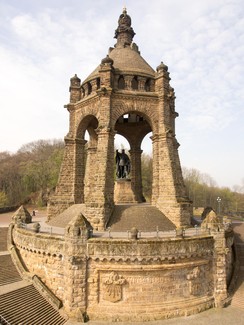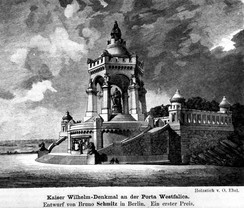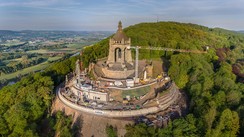Architectural History
Shortly after the death of Kaiser Wilhelm I (1797-1888) on 9 March 1888, numerous plans were hatched to erect a memorial to the first German Emperor and King of Prussia. The Provinzialverband (Provincial Association), the predecessor of today’s LWL, likewise planned such a memorial and decided in 1889 by 43 to 36 votes on Porta Westfalica (the ‘Westphalian Gap’) as a site and natural landmark which could create a visual impact over a wide area. It was designed by, the still young but much sought after, architect Bruno Schmitz (1858-1916). In an 1890 competition his proposal was selected from amongst 56 candidates. The seven metre high statue of the emperor was conceived by the Viennese sculptor Caspar von Zumbusch (1830-1915), originally from Herzebrock.


